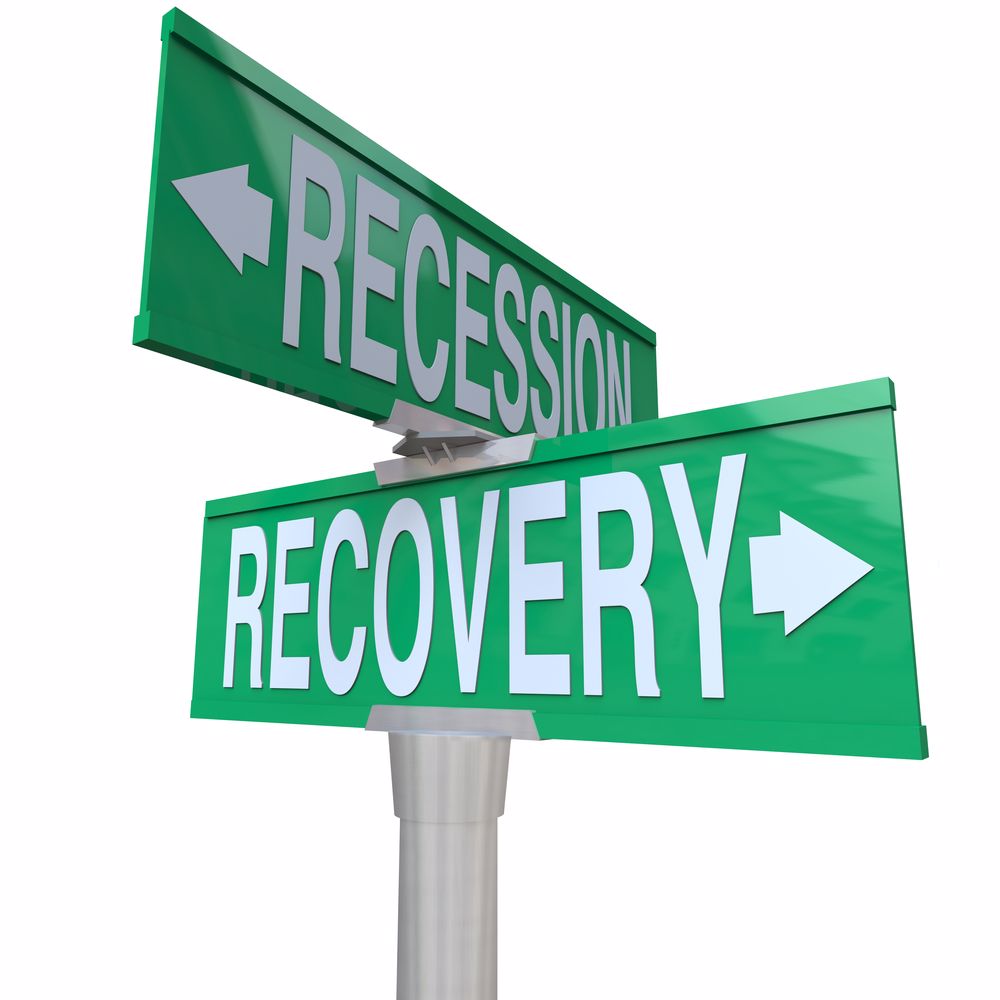
Is Australia in a recession? Everything you need to know
In Australia's constantly shifting economy, it's important for small businesses and individuals to keep up with the latest changes — especially when dealing with the ups and downs of the market.
At Wilson Porter, we're dedicated to providing a clear, approachable understanding of these trends — including the current state of the Australian economy and its implications.
What is a recession?
When discussing a recession, we refer to a specific economic condition where a country, like Australia, experiences negative growth in its Gross Domestic Product (GDP) for two consecutive quarters. This isn't merely a statistical detail but a significant shift in the economy's rhythm.
For instance, during the 2008 global financial crisis, while many countries faced severe economic downturns, Australia managed to avoid a recession. This resilience is often attributed to the country's robust economic policies, diverse economic base, and effective monetary policy implemented by the Reserve Bank.
During a recession, the economy slows down considerably, often leading to rising unemployment rates and decreased consumer spending. These changes can significantly impact Australian businesses and industries. For example, if the Reserve Bank sets higher interest rates, it can affect credit card payments and cash flow for businesses and consumers alike. Additionally, sectors like Australian aviation and tourism might experience downturns due to reduced consumer spending.
Recent economic trends in Australia
As of the latest reports — including those from Deloitte Access Economics and the Australian Financial Review — Australia has shown signs of economic growth, albeit with challenges. The Reserve Bank has been closely monitoring inflation and the impact of higher interest rates on the economy. In recent quarters, such as in June and September, Australia has seen varied economic activity, with some sectors experiencing growth while others face hurdles due to high inflation and changing global conditions.
Population growth and GDP
Australia's population growth significantly impacts its economic health. As the population expands, household expenditure and consumer demand rise, driving GDP growth. But, to achieve long-term stability, this expansion must be tempered by sustainable economic policies.
As we move forward, it is critical for Australian businesses and individuals to stay informed on the latest economic trends, such as changes in GDP growth, unemployment rates, and the effects of monetary policy. Understanding these dynamics is essential for making sound decisions and effectively navigating economic ups and downs.
Australia's economic landscape in 2023
In 2023, Australia's economy paints a picture of contrasts and nuances. While certain industries are thriving and contributing to economic growth, others are not faring as well, leading to an uneven pattern of development across the board.
For instance, sectors like technology and healthcare have shown robust growth, buoyed by innovation and increased demand. On the other hand, traditional sectors such as manufacturing have faced more challenges, grappling with global competition and technological shifts.
Yet, this situation has a positive aspect in the form of stable employment rates. Despite the varied economic performance, the job market has shown remarkable steadiness. This consistency is an important sign of the economy's robustness. Insights from KPMG suggest that this durability stems from Australia's varied economic framework and agile policy responses.
Technical recession and economic resilience
Earlier in 2023, Australia experienced what is termed a 'technical per-capita recession,' marked by consecutive quarters of declining GDP per capita. However, this didn't translate into a full-blown recession for the broader economy. This resilience, as noted by economic experts, is partly due to strong domestic consumption and a robust service sector, which continued to perform well despite global uncertainties.
In 2023, the economic path has been influenced by a mix of international and local elements. On the global front, trade tensions, variable commodity prices and market dynamics have had a significant impact. Within Australia, the landscape has been shaped by consumer confidence, trends in the housing market and various government policies.
To sum it up, while 2023 was a year of mixed fortunes for different sectors of the Australian economy, the overall picture is one of resilience and adaptability. For a more detailed analysis, KPMG's comprehensive report offers deeper insights into Australia's economic outlook.

Assessing the likelihood of a recession in Australia
As we look ahead to 2024, the question of whether Australia is heading toward a recession looms large. It's a topic that's not only of academic interest but also of practical significance — especially for businesses and individuals trying to plan for the future.
A pivotal piece of this puzzle is the Finder survey, which has put the probability of Australia experiencing a recession in 2024 at about 32%. This figure is significant in that it highlights a real risk, but it also underscores that a recession is not a guaranteed outcome. It's a nuanced prediction, suggesting that while caution is warranted, there's room for optimism.
Historical context and global factors
To fully appreciate this forecast, it's essential to consider both historical patterns and the current global economic climate. Historically, Australia has shown a remarkable ability to navigate through economic downturns, often emerging with a stronger and more diversified economy. For instance, the resilience displayed during the worldwide financial crisis of 2008 is a testament to this adaptability.
However, the global economic environment in 2024 presents unique challenges. Issues such as trade tensions, fluctuations in international markets and the ongoing impacts of the COVID-19 pandemic continue to influence Australia's economic prospects. These factors, combined with domestic variables like consumer spending and government policy, contribute to the overall economic outlook.
In addition to the Finder survey, insights from economic experts and institutions provide a broader perspective. Reports from the Reserve Bank of Australia (RBA) and analyses from financial think tanks offer a more comprehensive view of the potential risks and opportunities facing the Australian economy. These reports often highlight the interplay between domestic economic policies and global market conditions, offering a more detailed understanding of the factors that could lead to a recession.
So, is Australia in a recession?
While the probability of a recession in Australia in 2024 is notable, it's a complex scenario influenced by many factors. Gaining an insight into these dynamics is key to preparing for potential economic challenges ahead. For those seeking a deeper dive into the economic forecasts and trends, resources like the Finder survey and RBA reports offer valuable insights into the future.
Tracing Australia's economic growth and recession history
Australia's economic narrative is one of resilience and evolution, marked by periods of growth interspersed with recessions that have shaped its current economic landscape. Understanding this history is crucial for grasping how the nation has adapted and transformed.
Australia's economy has experienced several significant recessions, each leaving a distinct mark on its economic fabric. Notable among these was the recession in the early 1990s, which led to substantial reforms in monetary and fiscal policy. Another key period was the global financial crisis of 2008, from which Australia emerged relatively unscathed compared to other developed nations, largely due to strong mining exports and effective government stimulus.
Each recession has had long-lasting effects on various aspects of the economy. For instance, the 1990s recession led to a reevaluation of labour market policies and industrial relations, resulting in more flexible work arrangements. These downturns have often acted as catalysts for change, spurring innovation and adaptation across industries.
The evolution of key industries
The manufacturing sector in Australia — once a dominant economic force — has undergone significant transformation. Faced with global competition and rapid technological advancements, the industry has shifted toward more specialised and technologically advanced manufacturing. This evolution reflects a broader global trend and highlights the need for continuous adaptation.
Concurrently, the service sector has seen remarkable growth, becoming an increasingly vital component of Australia's economic landscape. Sectors such as finance, education, and tourism have expanded, driven by factors like technological advancements and globalisation. This growth underscores the diversification of Australia's economy and its shift toward service-oriented industries.
Adapting to a changing economic environment
Australia's economic history teaches us the importance of adaptability and resilience in the face of change. The nation's ability to navigate through recessions and adapt its industrial base has been key to its sustained economic growth. In the future, this adaptability will continue to be crucial as the global economy evolves and new challenges emerge.
Exploring Australia's history of growth and recessions shows a trend of resilience and adaptability. The nation's capacity to handle downturns and evolve its industrial sectors has been key to its present financial strength, and this history offers insights into how Australia might tackle future fiscal challenges.
The broad impact of recessions
Recessions impact various sectors differently. While some industries, like debt collection and discount retailing, may experience growth during economic downturns, others may face significant hurdles. For individuals, recessions can lead to job insecurity and financial strain, highlighting the importance of monetary planning and diversification.
In times of economic uncertainty, identifying sectors that are likely to remain stable or grow becomes crucial. For businesses, this might mean pivoting to recession-resistant services or products. For individuals, diversifying investments and focusing on financial resilience can provide a buffer against economic shocks.
Concluding thoughts
Reflecting on Australia's economic past and looking ahead at possible recessions, it's clear that being adaptable and prepared is crucial. At Wilson Porter, we're here to offer you the insights and advice you need to navigate these uncertain economic times confidently.
When it comes to economic changes, it's important to stay informed and ahead of the curve. And you don't have to do it alone. If you're looking for tailored accounting services that fit your specific needs, Wilson Porter is here to assist. Our team is ready to provide personalised support to ensure your financial planning is solid and adaptable.
Get in touch with Wilson Porter today for expert assistance in managing your finances in this ever-changing economic environment. Let us help you prepare for the future with confidence.

 Small business strategies: Building effective budgets with expert assistance
Small business strategies: Building effective budgets with expert assistance PM calls leading organisations for economic meeting
PM calls leading organisations for economic meeting Is crowd funding the right choice for my business?
Is crowd funding the right choice for my business?